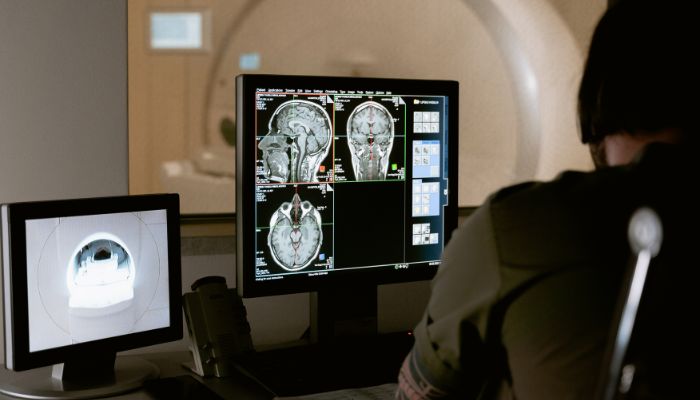
Teleradiology, being a subspecialty of telemedicine, involves the transmission of radiological images across locations using telecommunications systems. The proliferation of this service has transformed diagnostic imaging into a valuable commodity in the global market, leading to notable shifts in the roles of radiologists and the requirements of clinicians. However, it also presents unique challenges within the realm of teleradiology.
From its development for military purposes to its first commercial use in the eighties, Teleradiology has now become a reality. The landscape of healthcare delivery is undergoing a transformation, and teleradiology plays a crucial role in this evolution, along with the globalization of radiology.
Furthermore, Teleradiology has become extremely popular with medical and radiology centers due to the benefits it has offered. Here is a quick peek at how teleradiology has become so essential.
Faster diagnostics
Teleradiology solutions enable radiologists to swiftly access medical images through secure telecommunication links over the internet, ensuring immediate connectivity.This ensures that the physician can see the imaging results almost immediately, regardless of where they are. Such quick access results in a more accurate and timely diagnosis.
Lower operational cost
Teleradiology is assisting healthcare facilities in reducing their radiology infrastructure and personnel. For example, teleradiology eliminates the need for a full-time in-house staff by allowing radiologists to read and interpret diagnostic imaging seamlessly.
Furthermore, teleradiology eliminates the need for radiologists to travel to the location where the patient image was captured, allowing them to work from virtually any remote location.
Easy access for remote areas
As previously stated, radiologists can use teleradiology to remotely interpret medical images and share their findings with physicians and other healthcare providers in different locations. This has greatly benefited medical practitioners and patients by allowing them to quickly reach a diagnosis without having to travel.
Educational opportunities
Teleradiology has provided radiologists with an excellent platform for collaboration and learning from one another. Through presentations from clinical radiologists or other knowledgeable health care experts in the field, the technology has been especially useful as an educational tool. Teleradiology also opens up new avenues for learning best practices by utilizing errors rather than just identifying and tracking errors.
Emerging Challenges of Teleradiology
Today, Teleradiology services for hospitals have progressed from a potential threat to traditional imaging to a widely accepted practice that improves patients’ access to care. Furthermore, the immediate availability of diagnostic services via teleradiology has been critical during medical emergencies.
However, teleradiology is still being impacted by many emerging challenges that are hindering its adoption and accessibility; such as licensing issues, regulatory requirements, technological adoption, and even staffing.
In this post, I have shared some of the key hurdles that have had a significant impact on the spread of Teleradiology, along with some possible solutions.
Licensing and credentialing
To regulate activities that affect the health and welfare of people each state in the US has introduced many licensing regulations for the practice of medicine. However, such licensing requirements are in themselves a cause for concern as every state in the US is implementing its own regulations resulting in a tremendous administrative paperwork burden.As an example, the ACR–AAPM–SIIM Technical Standard for Electronic Practice of Medical Imaging mandates that radiologists possess knowledge about the licensing prerequisites for delivering teleradiology services at both the transmitting and receiving locations.
Especially in the practice of teleradiology, a lack of uniform licensing and credentialing is creating a significant barrier of entry into the field. Despite the efforts made by teleradiology companies to streamline these procedures, the process continues to be arduous.
Regulations
The regulations put in place by each state certainly have an impact on the teleradiologists who render interpretations in multiple states. These regulations, even though essential, pose a challenge for teleradiologists as they can be too costly and complex for practices to implement.
For instance; in the state of New York a primary diagnostic monitor used in teleradiology must meet specific luminance standards and are required to undergo multiple types of routine testing. Whereas, in the state of Washington the regulations are a bit more relaxed you can practice teleradiology even without a Washington license.
In such a scenario what we require is the standardization of regulation across geography along with regulation that does not result in disparities in the quality.
Technology and system integrations
Interpreting a teleradiology report and making clinical observations require the technician to have access to previous imaging examinations, electronic medical records, along with the details of other relevant medical history, and suspected diagnoses.
However, as teleradiologists work with different institutes, they are usually prevented from accessing comparison examinations and meaningful information about patients. This is mainly because the medical facility does not want to compromise their information security.
To overcome this challenge it is essential that open communication channels between teleradiologists and transmitting sites are encouraged. Other possible solutions include putting in place minimum technologic requirements for both the transmitting and receiving sites, such as the use of secure storage and transmission tools.
Reimbursements and after hour staffing
As explained earlier, teleradiologists usually work for multiple institutes due to which they have to juggle between shifts that are 9 hours or even longer in duration. Such a burden of work has physical and psychosocial effects and can lead to poor job satisfaction. Furthermore, even though a pay differential exists for overnight workers, this pay model does not apply to teleradiology.
However, it is also true that the access to emergent after-hours imaging examinations has been the driver of teleradiology growth. This growing volume of time-sensitive emergency services has made it challenging for teleradiologists to find good work life balance.
Summing Up
Teleradiology is an important branch of telemedicine that has the potential to improve patient outcomes and expand access to radiological services. Not only has it been able to bridge the gap between access to high-quality healthcare services in rural areas, but it is also being used for educational purposes in some cases.
No can deny the benefits of the increasing role for teleradiology in the healthcare industry but it also poses some challenges. From licensing, regulations, and system integrations to staffing issues, teleradiology has its fair share of complexities. However, given its potential this technology is likely to further enhance its effectiveness and utility in the years to come.

Lifebing is driven by an unrelenting passion for promoting health and well-being, our team is wholly committed to curating exceptional content and immersive experiences.
